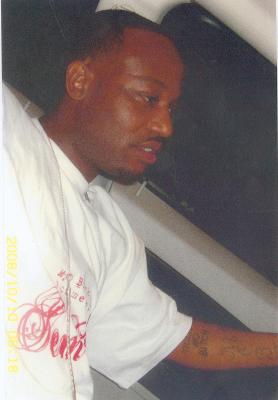Oakland Police Officer who Fatally Shot Black Man Reinstated - with back pay
/
From [HERE] and [HERE] OAKLAND -- A police officer fired for shooting an unarmed man in the back in 2008 will be brought back to the police payroll within the next two weeks, as he proved he had reason to believe the man had been a threat to another officer, an arbitrator ordered Friday.
Officer Hector Jimenez, 24, was fired about a year after he shot and killed Mack "Jody" Woodfox, after Oakland Police Department officials decided he had used excessive force.
Woodfox had been unarmed and was running away from Jimenez at the moment of the shooting.
After a follow-up investigation, Seattle-based arbitrator David Gaba, who was given jurisdiction over the issue, decided that Jimenez was acting within department policy, which trains officers that they "should consider any high-risk suspect to be armed until they have personally assured themselves otherwise."
Woodfox became a high-risk suspect, Gaba found, when he briefly evaded police during a car chase in the Fruitvale district around 3:30 a.m. on a Friday in July 2008. When Woodfox did pull over, he got out of his car immediately, just as Jimenez was getting out of the passenger side of a patrol car driven by his partner.
Jimenez said he then pointed his gun at Woodfox and ordered him to show his hands. Instead, Gaba found, Woodfox ran toward Jimenez's partner, reaching with both hands for his waistband. Jimenez fired several shots, killing Woodfox.
"The problem was, (Woodfox) passed up open avenues of escape in favor of running toward the police," said Justin Buffington, Jimenez's attorney.
"He had three wide open lanes of traffic, could have run through Sanborn Park, various apartment complexes and nearby parking areas, and instead elected to run toward a police officer."
Reports showed Woodfox was intoxicated on cocaine, ecstasy and alcohol when he was shot, which likely contributed to the reckless driving that got him pulled over and caused the confusion that may have driven him to run toward an officer, Buffington said.
Civil rights attorney John Burris, who was hired by Woodfox's family for a lawsuit against the city over the shooting, called it "the worst police shooting I have ever been involved in" outside of the killing of Oscar Grant III, of Hayward. Grant was shot and killed by a BART police officer.
Burris had called for criminal prosecution against Jimenez and said he is horrified and disappointed by the decision to bring him back to the force. However, he acknowledged that little remains in the way of legal recourse.
Jimenez had also shot and killed another unarmed man seven months earlier, which Burris said shows "a propensity to shoot first and ask questions later" and "raises questions about his emotional stability."
"I know the deck is stacked in favor of the police, but this is such an egregious shooting," Burris said.
"He should not be rewarded for killing two people in such a short time and be welcomed back with open arms."
Buffington, on the other hand, called Jimenez "a real go-getter and a good cop," who had an arrest rate four times as high as his squad's average.
He said Jimenez grew up in a poor Richmond neighborhood and his "lifelong dream was to be a police officer in Oakland."
"Oakland had the largest Hispanic community in the area, and he thought he could make a difference there," Buffington said.
Woodfox was later found to be the prime suspect in a murder that occurred during a robbery in East Oakland five hours before his fatal run-in with Jimenez, Buffington said.
Since the shooting, Jimenez has been working part-time at a firm that conducts confined space rescues at local refineries, Buffington said. He will be owed about $200,000 in back-pay and is eager to return to police work, Buffington added.
Department spokeswoman Holly Joshi said Jimenez will have to undergo at least two weeks of retraining.
That training will include how the department has refocused its firearms training, she said.
The training now includes an increased "focus on scenario-based training that is intended to teach decision-making skills that will have a positive impact on officers having to use force in the field, including use of firearms," Joshi said.




























































































































































































































































































